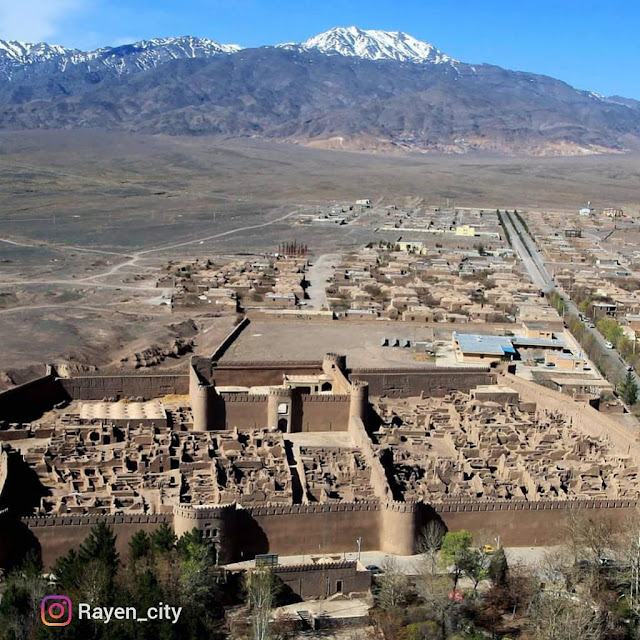Rayen Citadel (ارگ راین) is an adobe castle situated in Kerman Province south-west of the city of Rayen and is considered the biggest earthen structure of Kerman province after Bam Citadel. Rayen displays all the architectural elements of a deserted citadel. Rayen Citadel was inhabited until 150 years ago and, although believed to be between 500 and 1,000 years old, may in fact have foundations from the pre-Islamic Sassanid era. It appears extremely well preserved, considering the numerous natural disasters that have been destroying similar structures nearby.
Rayen Citadel spans 20,000 square meters, remaining a symbol of the residential fortresses during the ancient times. It covers an almost perfect square area and consists of a number of towers on its perimeter. It is surrounded by a 10 meter wall and on its southern side an artificial moat had been dug to add to the Citadel’s security. The Citadel has its main entrance located on its eastern side. After passing through this articulately designed entrance and after passing by a number of side alleys, there are four structures that in all likelihood were reserved for the wealthier inhabitants. Similar to other fortresses, it consists of the public quarter and the aristocratic zone. The essential sectors such as Zoorkhaneh, mosque, and stable can be seen in the Citadel.
According to historical records, during the reign of Yazdgerd III, while Arab attacks resulted in loss of many parts of Kerman and its vicinity, Rayen Citadel remained impenetrable. During the Zandiyeh era, in particular Nader Shah’s reign, Rayen Citadel served as a strategically important base in addition to the living quarters of local rulers Mirza Hossein Khan and his son Mohammad Ali Khan. Following the ascending of Agha Mohammad Khan, Rayen Citadel continued housing Mirza Hossein Khan’s bloodline, many of whom still live in Kerman, if not Rayen itself. Mirza Hossein Khan’s popularity amongst the locals has prompted many to refer to the structure as Mirza Hossein Khan’s Citadel.
Local residents believe that Rayen troops victories in wars was in part due to the quality of their handmade weaponry produced by locals. Two ancient industries practiced in Rayen city, weaponry and knife-making, are due to be revived there by establishing workshops in the area of Rayen Citadel.
The medieval mud-brick city is similar to the Bam Citadel which was destroyed in an earthquake in December 2003. Following the Bam earthquake and in 2004, the Cultural Heritage and Tourism Organization of Iran (ICHTO) announced the introduction of the Citadel as part of its main programs. Since then, the Citadel is gradually changing to a tourism destination.










No comments:
Post a Comment